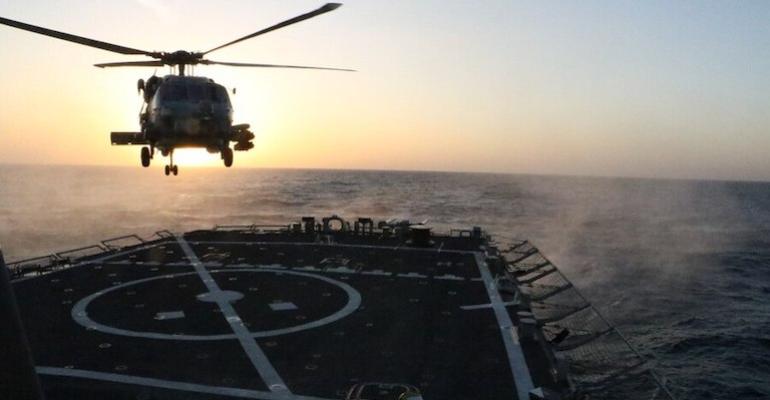While the US announced the multi-national security initiative Operation Prosperity Guardian on Monday owners are waiting to see the outcome of the task force and whether it can protect the trade lane.
Inventor Chemical Tankers, which owns the Swan Atlantic the latest casualty in the Red Sea, has said its vessel was wrongly targeted due to an incorrect statement on a public website.
Swan Atlantic was hit by a missile fired by the Houthi Movement on 18 December and is being assisted by the USS Carney, but the company said there were no crew casualties.
An Inventor Chemical statement said: “For the record, there is no Israeli link in the ownership (Norwegian), technical management (Singapore) of the vessel nor in any parts of the logistical chain for the cargo transported. We note that information provider Marine Traffic has wrongfully claimed that the vessel is managed by an ‘Israel affiliated company’ on their web site.”
Analyst at Drewry Shipping consultants, Simon Heaney, said “Virtually every container ship will decide to go via the Cape of Good Hope.”
MSC, Maersk, CMA CGM, Hapag-Lloyd, HMM, and Ocean Network Express have all publicly stated that they have suspended transits of the Red Sea and Suez Canal opting to sail by the much longer Cape of Good Hope route.
According to Heaney container operators will want to see all risk eliminated before they will resume transits through Suez, which necessarily requires vessels to pass through the Red Sea and the Bab al-Mandeb Straits to and from Asia.
Security consultants Dryad Global is cautious about whether the US led task force, labelled Operation Prosperity Guardian can sufficiently protect commercial traffic.
“When you look at the map this is a fairly small region [the Bab al-Mandeb], however it does present challenges to protect global shipping. Right now, we don’t know when the coalition will have their ships in place or the rules of engagement for this operation along with the actual number of coalition vessels that will be operating within the region,” said Dryad Global CEO Corey Ranslem.
He added: “If there are only a few coalition warships it could be difficult to provide the necessary protection within the region because of the expanded threat area.”
If the task force fails to provide sufficient protection Heaney believes there could be a significant “retooling of liner shipping’s network”.
The most significant impact will be on goods to Europe, with 10 days extra sailing time, but that will increase further for freight heading to the Mediterranean.
“Eastern Mediterranean freight will most likely be transhipped at Algeciras or Tanger,” said Heaney, “but the market is dynamic and unpredictable”.
Market analyst Xeneta said that consumers around the world will pay for the unfolding Red Sea crisis as supply chains are plunged into chaos, with the company’s latest data showing spot rates have already spiked by 20% since Friday.
Peter Sand, Xeneta Chief Analyst, said: “Ships are now being re-routed via the Cape of Good Hope, but not only will this add up to 10 days sailing time, it will cost up to $1 million extra in fuel for every round trip between the Far East and North Europe.”
Xeneta estimates the diversion via Africa will also require an additional 1 million teu in container capacity alone: “There is capacity in the market, but it will come at a cost, and we could see ocean freight shipping rates increase by 100%,” warned Sand.
Ranslem said that on average roughly 100 commercial vessels pass through the Red Sea area every day, though that number will decrease in the short term as companies protect crew and assets.
“Once we understand the rules of engagement and the protection procedures that will be used by the coalition, we will then be able to determine the effectiveness of this operation,” he added.
Copyright © 2024. All rights reserved. Seatrade, a trading name of Informa Markets (UK) Limited.
Add Seatrade Maritime News to your Google News feed.  |

